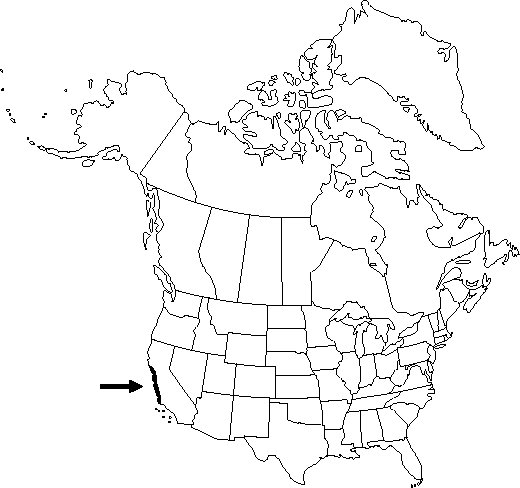Difference between revisions of "Delphinium californicum subsp. californicum"
FNA>Volume Importer |
imported>Volume Importer |
||
| Line 47: | Line 47: | ||
|publication year= | |publication year= | ||
|special status=Endemic | |special status=Endemic | ||
| − | |source xml=https:// | + | |source xml=https://bibilujan@bitbucket.org/aafc-mbb/fna-data-curation.git/src/bb6b7e3a7de7d3b7888a1ad48c7fd8f5c722d8d6/coarse_grained_fna_xml/V3/V3_706.xml |
|genus=Delphinium | |genus=Delphinium | ||
|section=Delphinium sect. Diedropetala | |section=Delphinium sect. Diedropetala | ||
Revision as of 23:04, 27 May 2020
Stems puberulent most of length. Leaf blades abaxially and marginally puberulent. Inflorescences puberulent. Flowers: sepals erect, lavender, densely puberulent, lateral sepals 7-11 mm, spurs 7-14 mm; upper petals with simple, nearly apical hairs. 2n = 16.
Phenology: Flowering late spring.
Habitat: Generally coastward slopes in dense coastal chaparral, often within sight of Pacific Ocean
Elevation: 0-1000 m
Discussion
Delphinium californicum subsp. californicum is locally common, but populations tend to be scattered and often are in areas subject to human encroachment. A general trend of increased density and length of pubescence, correlated with increased frequency and density of coastal fog, is apparent. Specimens called D. californicum forma longipilis Ewan are so named for their abundance of pubescence; they grow in areas of abundant fog. This subspecies has formed garden hybrids with D. cardinale.
Selected References
None.
